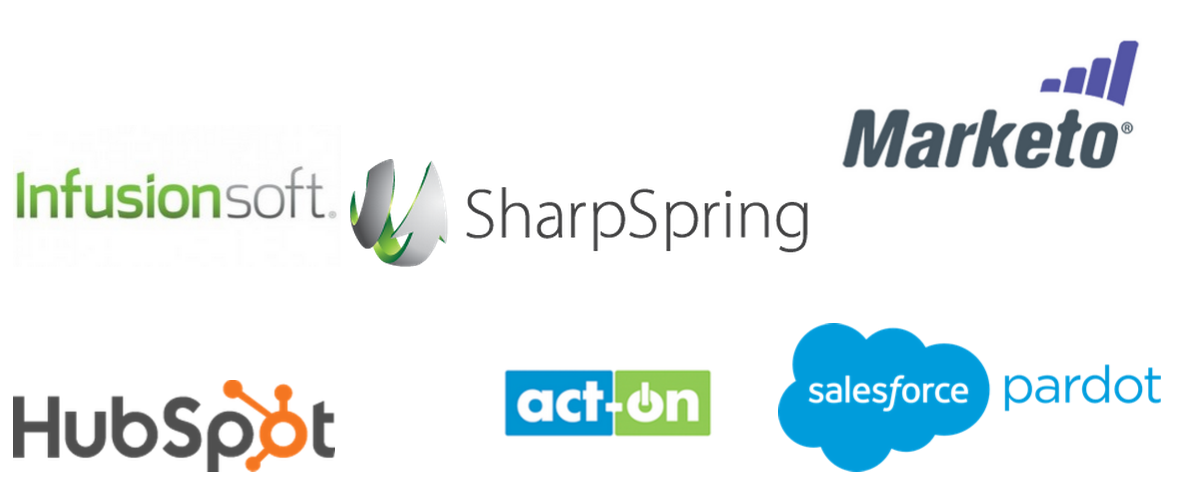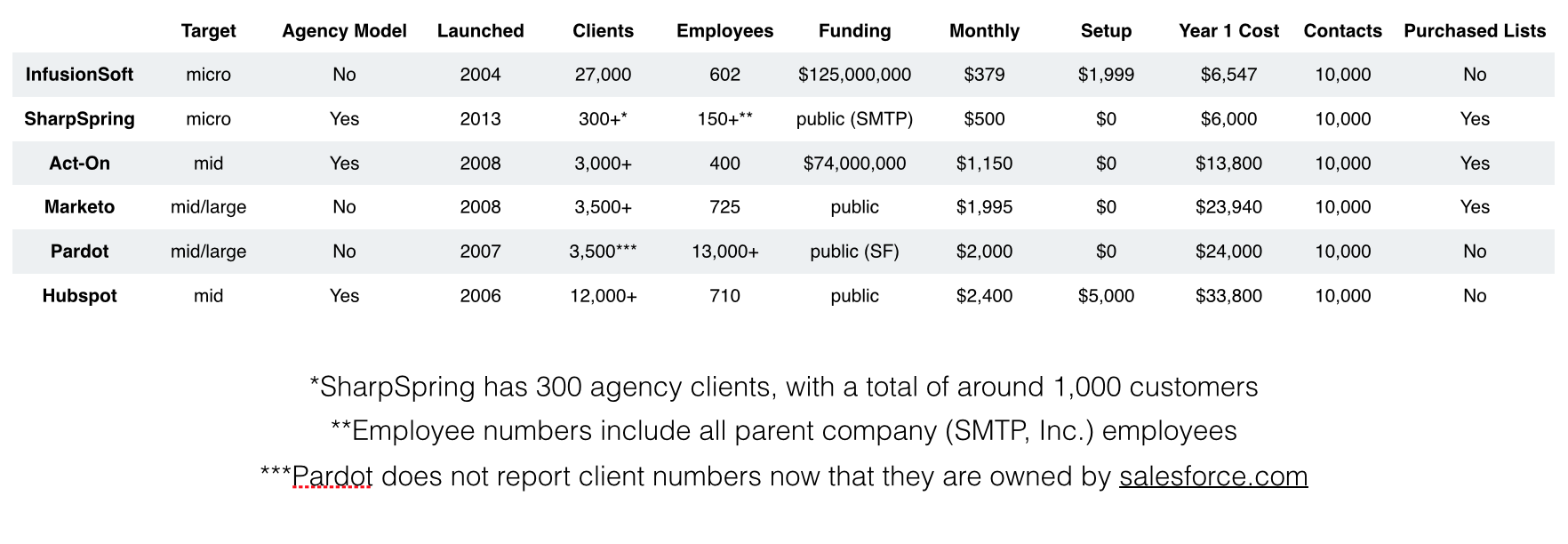It’s been about six weeks since we drove home from the Fearrington Inn. It’s been just enough time to begin reflecting on some of the memorable experiences from the Newfangled Seminar that I feel lucky to have been a part of.
Thinking back now on the many conversations I had with the attendees, I’m starting to tie things together and see some trends that weren’t as visible in the moment. As the seminar was happening, we were focused on presenting the material that we had prepared and talking about the things we thought would be valuable for everyone who was there.
But it was the small side conversations and the one-on-one time where I was able to learn about the real issues facing these businesses. One of the key themes that came up time and again was the struggle to figure out which marketing automation platform provides the best solution for a business’ individual needs.
One of my presentations took an objective look at six of the major marketing automation providers — Act-On, HubSpot, Infusionsoft, Marketo, Salesforce Pardot and SharpSpring — and discussed the types of businesses for which they each work well. But each person I spoke with brought up a different challenge; their business was different in its own unique way. For example, we spoke with a relatively small nonprofit organization that has a huge list and sends out hundreds of thousands of emails to various lists, with different goals for each one. Would a more simple platform work for them, or did they need an enterprise-level solution?
Through all of these conversations, and my continued research on this topic, one thing has become apparent: There is a ton of competition in the marketing automation space, and there is no one-size-fits-all solution. To make it even more complicated, the landscape is always changing — new solutions are popping up, new features are being added, and platform providers are merging or being acquired.
At Newfangled, we have worked extensively with Act-On Software over the past few years, as it provides a great feature-to-cost ratio, and the types of features it provides are in line with what most of our clients need.
But we have seen more and more marketing automation companies entering the playing field, and our smaller or larger clients have slightly different needs. As Newfangled continues to grow and our offerings continue to mature, we are in the process of expanding our marketing automation consulting to include other platforms as well (like we have successfully done with Salesforce) to better serve the needs of our clients.
Many of the people that I spoke with at the Seminar were struggling because of the misinformation being produced about each of the different marketing automation platforms. For example, when talking with a sales rep for one automation platform, I have been told things about other platforms that simply are not true. They may have been true at one point in time, but are no longer accurate. And it’s not just sales reps trying to close a deal: Marketing automation software is evolving quickly. Any information that was published more than a few months ago is likely already becoming outdated as each of the different platforms continue to grow, adding features and fixing issues. This misinformation, on top of the general mudslinging, can result in a great deal of confusion, making an important decision even more difficult.
To help get you started and compare apples to apples, based on facts, below is the outline that I shared at the seminar. It takes an objective look at six of the major players in this space. I hope this helps you get started with your comparison process and that it will inspire you to ask the right questions about each of these providers, as it did for those in attendance at the Newfangled Seminar.
(click on the thumbnail for the full-size image)
A few things to note when reviewing this chart:
- “Purchased Lists” refers to your ability to send email to a non-opt-in list. This was an important point to many Seminar attendees, as they were looking to quickly grow their lists and have the ability to email prospects who have not yet opted in.
- “Agency Model” refers to your ability to manage several accounts, with a cost structure that allows the agency to set the pricing for the client.
This chart should not be the only resource you use in deciding on a marketing automation platform, and as I mentioned, the figures go out of date fairly quickly. I encourage you to do your own research and consider looking at the Raab Associates’ Vendor Selection Tool. Be ready to ask lots of questions of any potential provider to make sure you’re signing up for the best platform for your business.

